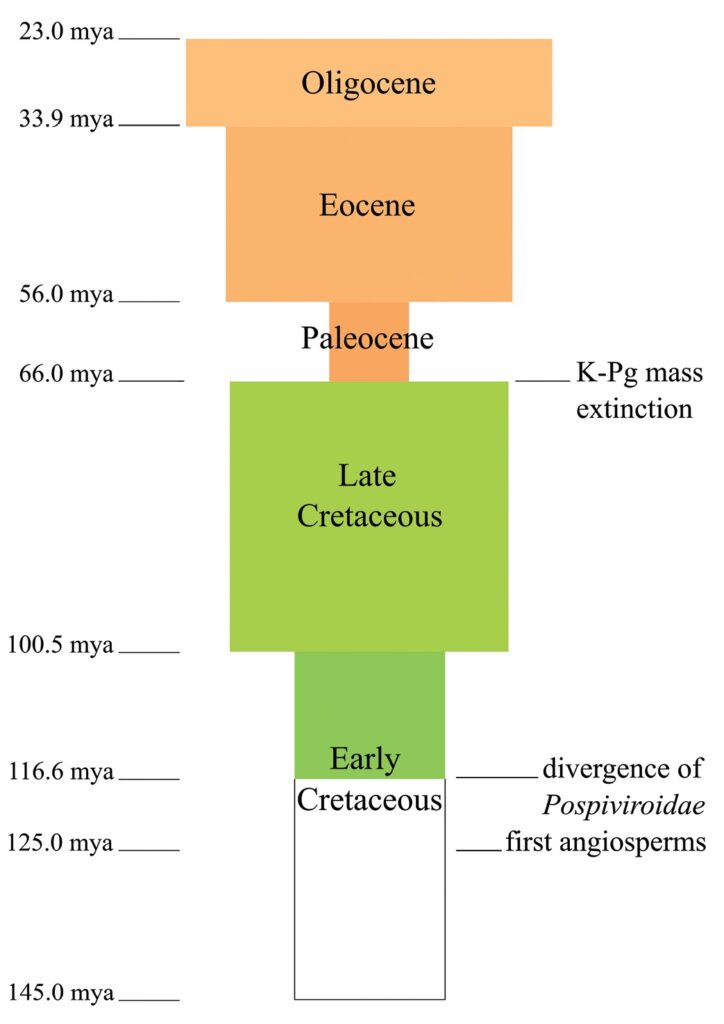
Sometimes I love reading papers that have little to do with my field of work, either because there are specific topics that are tangentially interesting to me, or just to have a glimpse at stuff that I ever paid attention to. And sometimes I just bump into amazing stories without even looking for them.
This has been the case today. The other day I was watching Oliver Lugg’s extensive, meta-narrative video essay on the mass extinction debates. It then just occurred to me that, since the environmental catastrophe was on a massive, global scale, surely plant life would have had to suffer the same wiping as our dear dinosaurs. But since plants are always overlooked, I had never read on it.
I went to Wikipedia’s article on the K-Pg extinction (the one of the meteorite) and junped to the section of flora. Then I read this:
Another line of evidence of a major floral extinction is that the divergence rate of subviral pathogens of angiosperms sharply decreased, which indicates an enormous reduction in the number of flowering plants.
From “Cretaceous–Paleogene extinction event” (Wikipedia)
What?
So yes, not only there was a massive plant extinction (the flowers we could have had!), but we get to know about it through something like this. The fact that there was a shift in the rhythm at which plant virus genomes acquired changes, a shift that was calculated to have happened ~60ish million years ago using some cool maths and statistics. A date around the same time a meteor decimated most life on Earth. Suggesting the guys ran out of hosts and became constrained. A story from millions of years ago. An event so massive its ripples are still felt through the inconspicuous “lives” of these tiny things and the plants they inhabit. Readable by us in today’s leaves and flowers as if they were long-lost, green scrolls retelling stories of old. Readable by you in a scientific paper, or in that wikipedia article, or here right now.
I love so many things about that paragraph. For a start, the fact that this link is a real thing that is reflected in the genomes of viruses hosted in nowadays’ plants. Secondly, the fact that we have been able to detect this with our methods (sequencing, bioinformatics, and some cool maths). Thirdly, the fact that this piece of knowledge is written in a totally lay style on a source of information that can be accessed and queried and read by virtually any human. So casually mentioned it almost brushes past it in a single sentence, at the same level of other evidences like the fossil record.

I do really think these little things say a lot about our own nature and what we are capable of. How we can disentangle the past of the universe in the least expected ways. Despite all the bad things humanity is responsible of, we should be happy and proud about this little bit of ourselves. At least make a reason to try and change those bad things about ourselves, and to fight for a better future.
Carl Sagan said that humanity and science are the ways the universe can get to know itself. Let today’s story be the vivid image of this quote.
Sources:
- Cretaceous-Paleogene Extinction Event. Wikipedia
- Bajdek, 2029: Divergence rates of subviral pathogens of angiosperms abruptly decreased at the Cretaceous-Paleogene boundary. Rethinking ecology.
